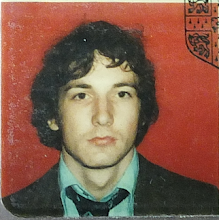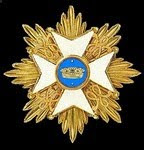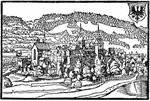After Pieter Wouwerman’s painting The Storming of Coevorden 30th December 1672
The 17th century Dutch artist Pieter Wouwerman painted "The Storming of Coevorden 30th December 1672" which depicts several flags, although only one is at all clear and has the Groningen arms in its top corner. (There is also a black and white engraving of the storm which is very similar to the painting but is, of course, less helpful.) A good resolution image of the picture can be found here: https://upload.wikimedia.org/wikipedia/commons/e/ea/De_bestorming_van_Coevorden%2C_30_december_1672%2C_SK-A-486.jpg for thsoe who would like to examine the detail.
We know that the Dutch regiments which were involved in this action were Groningen regiments Königsmarck (disbanded 1678; blue coated in 1672 and also fought at Seneffe 1674) and Rabenhaupt-Sucha (I48 in Mugnai, first raised 1671 as Carl von Rabenhaupt-Sucha, 1673 Arend Ludolf Gockinga, 1686 Barend Johan van Plott (which fought at Bentheim 1674 and Seneffe 1674 as well as Coevorden): given on 1/3/1703 to Ludolf Luyrt Ripperda. Uniform in 1702 was all off white; in 1703 it had red cuffs and waistcoat.
We do not know which flags belonged to which regiment. We do not even know with certainty that the artist has accurately depicted the flags carried at Coevorden, although the use of the arms of Groningen in the foremost flag leads us to believe that some attempt at authenticity has been made. In the absence of any other visual evidence it is the best we have. I have shown in my flag sheet top, the clearest and most detailed flag; below that the next most detailed flag but much of which is not clearly visible. The third flag down is my wildly speculative version of the two green flags where the corner silver streamers are clear but the central motif is only a very slight suggestion of some silver central device. The bottom flag is a Dutch flag captured at Fleurus in 1690 which also has a Groningen shield in the corner and may relate to these flags but whose identity is not known. The pale yellow flags were probably Colonel's flags and the green ones company or regimental flags.
So, make of this what you will! I would like to give the artist a good talking to about his failure to depict the flags clearly enough for our purposes but as usual I suppose we have to be grateful for the little information we do have from the painting!



















Beautiful work David. I'm loving all these wonderful Dutch flags you've been making recently. Keep it up pleeeeze!
ReplyDeleteThank you, Ray. :-) Yes, more Dutch flags to follow soon...
DeleteAll the best,
David.
Very nice flags David, handy for anyone gaming this period that's for sure, the third one is a particularly very nice.
ReplyDeleteThank you, Donnie. :-) I hope they will be useful and look forward to seeing them in action!
DeleteAll the best,
David.
As always excellent work David:). I suppose I think of Dutch flags as being orange and anything green Irish, so maybe I need to broaden my view... ;)
ReplyDeleteThank you, Steve. :-) The Dutch flags of the late 17th/early 18th century are really very varied; more coming along soon to prove that! ;-)
DeleteAll the best,
David.